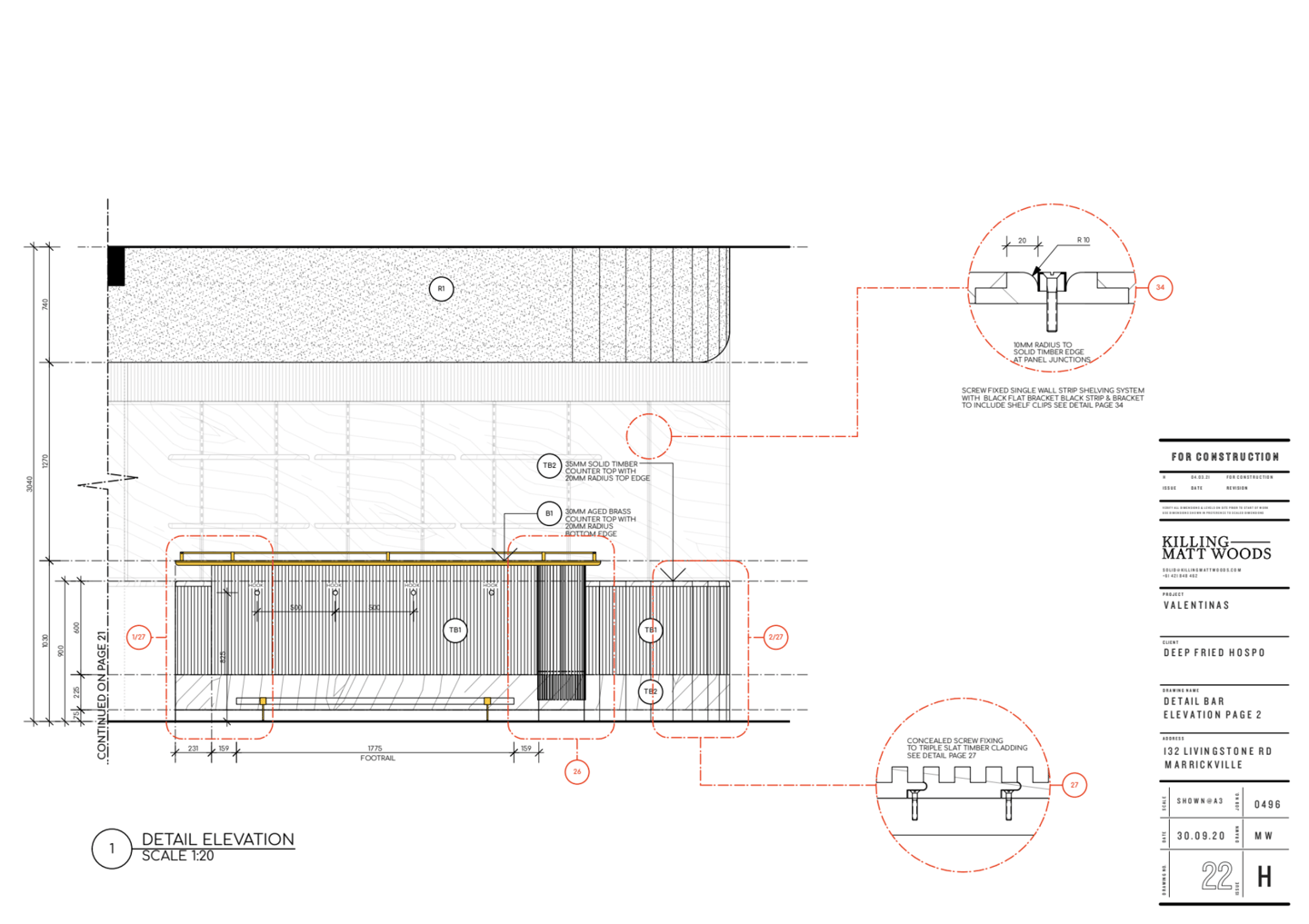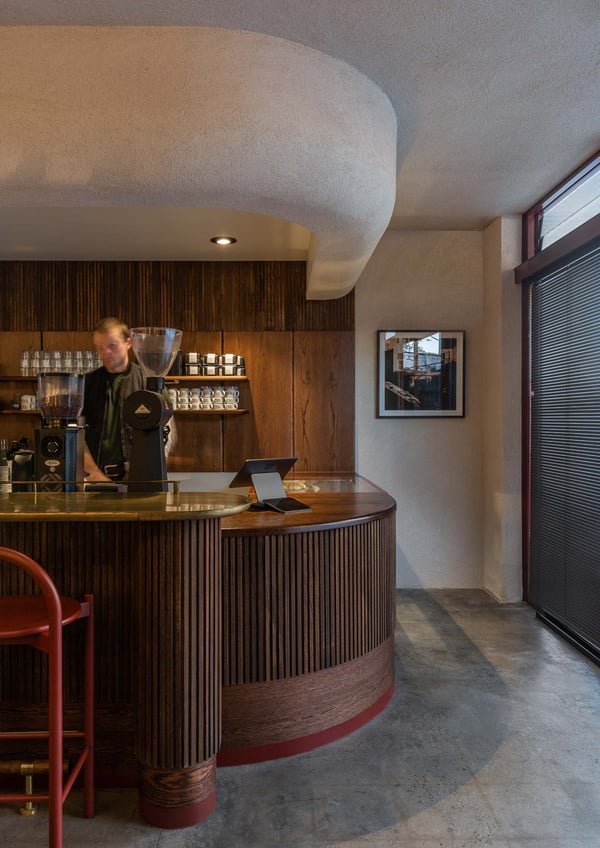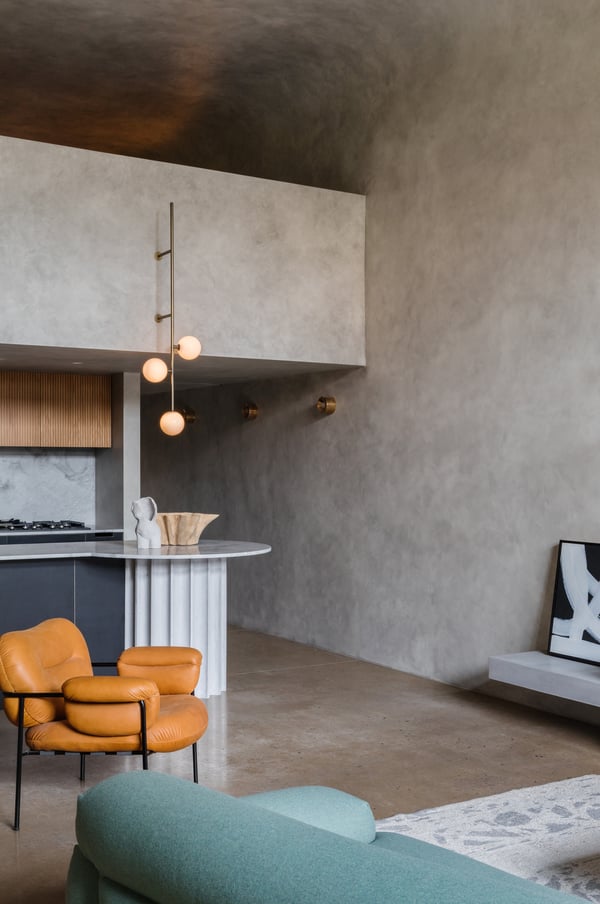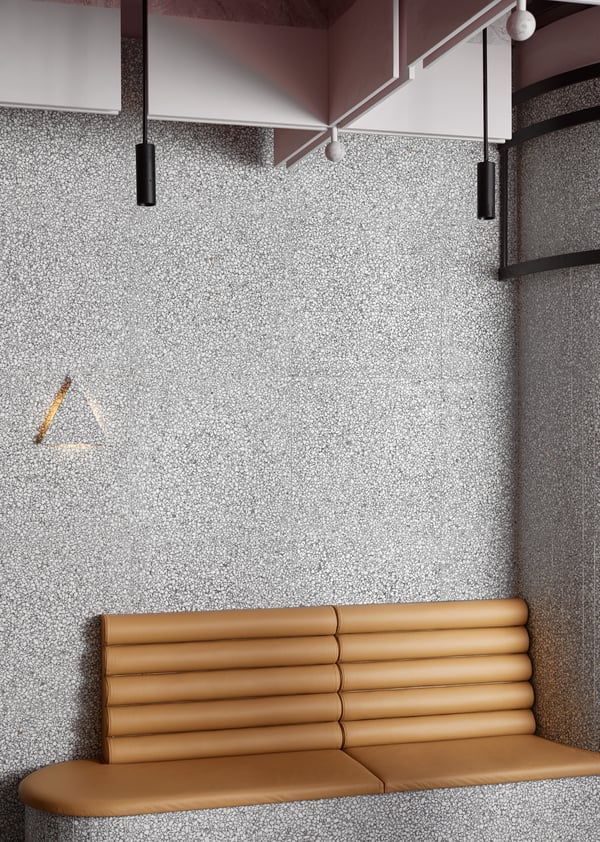A strong sense of style can transcend just about any design challenge, whether it be project type, budget, materiality, or sustainable considerations.
Matt Woods, the one-man team behind the Killing Matt Woods studio, certainly has that transcendent sense of style.
An award-winning designer based in Sydney, Australia, Woods has established a reputation as one of the most exciting designers in the industry, with outlets like The New York Times Style Magazine: Australia highlighting his eco-conscious designs and thoughtful aesthetics.
Woods has won awards like Best Residential Project in the 2020 Dulux Color Awards, Designer of the Year for the 2011 Design Excellence Awards, and many more honors.

Continue reading to learn more about Woods’ approach to sustainable interiors, how he’s using Vectorworks to create his award-winning designs, and advice for other designers.
A Sustainable Approach to Interiors
An industrial designer by training, Woods prides himself in his ability to take different approaches to building and interior designs. One of the most compelling ways this perspective comes through is in Woods’ philosophy of “designing for deconstruction.”
According to Woods, this approach, in its simplest sense, is “a way of designing [spaces and buildings] in a way that they can be broken down or deconstructed at the end of a project.” The design philosophy stems from the high turnover rate of businesses in the hospitability industry, a market Woods designs for frequently.

These considerations can be based on materials, like using lime mortar over cement mortar in brickwork, or around certain functional elements that are easier to be broken down. This can be as simple as fastening building elements with screws instead of nails or glues, or in the case of a newer project, a modular ceiling structure. “We’re experimenting on how we can reconnect and disconnect a ceiling structure. It’s a 500 square-meter space with this massive ceiling; it could potentially be quite wasteful,” he said.
Woods can take materials from past projects and reuse them for new ones, or, recently, he’s been working with recycling companies in the Sydney area who come in and take building materials and use them for other projects. In some cases, Woods also connects with these recycling companies for materials on different projects, creating a symbiotic relationship.
“The construction industry is well known for being one of the most wasteful industries around, so I’m just trying to do my little bit,” he said humbly.

If you’re also a designer trying to do your “little bit,” Woods gave three pieces of advice when it comes to designing for deconstruction:
- Focus on detail — “Any lack of detail in your design leads to builders making assumptions, and you can rest assured these assumptions won’t favor a deconstruction methodology.”
- Threaded fasteners are your friend — “Create non-permanent joints wherever possible. A screw or a bolt is better than a nail or glue.”
- Become mates with the builder — “Having a good relationship with the principal contractor or project manager can be more important than your relationship with the client; having an open dialogue about what can and can’t be done will only benefit a project.”
Sustainable Residential Projects vs. Commercial Projects
Woods acknowledged how his sustainable efforts and edgier style work in harmony with one another. “I’ll often use timbers as an example. I’ll always go for a reclaimed or recycled bit of timber over a brand-new, freshly milled piece of timber because there’s going to be some imperfection that I like.”

The use of reclaimed timber and other sustainable materials, such as VOC-free paint, are some of the eco-conscious measures Woods takes for residential projects. Since there’s less turnover in residential spaces than in commercial, such materials are how Woods still satisfies his passion for sustainable building design when “designing for deconstruction” isn’t the priority.
One of Woods’ most compelling residential projects is the award-winning Perfect Storm. The dramatic, brutalist space is a point of pride for Woods, who acknowledged how the restraints that are inherent to residential projects, in fact, “make the project.”

How Matt Woods Uses Vectorworks to Create Award-Winning Designs
Woods has been using Vectorworks for nearly 20 years, and it’s the only digital design software he uses.
The level of detail Woods puts into a project is on a case-by-case basis, but he always loves working in Vectorworks. The designer cites the “flexibility” the software offers him when working on 3D modeling and 2D drafting alike as being a tremendous plus.
Woods uses Vectorworks templates and symbols at the start of his project. These help him maintain a visual standard and control over 2D and 3D visuals. Using these standards, he’s able to easily repeat his approaches and carry detail over from project to project.
He also uses Vectorworks for the modular designs and considerations when “designing for deconstruction.” The previously mentioned ceiling structure, for example, is planned out using Vectorworks’ precise drawing tools.
To communicate these designs and their specifics, Woods finds Clip Cube viewports to be very helpful. To learn more about the underrated Clip Cube feature, click here.

And to find out how you, too, can use Vectorworks to design interiors, click the button below for a free webinar:

.svg)





